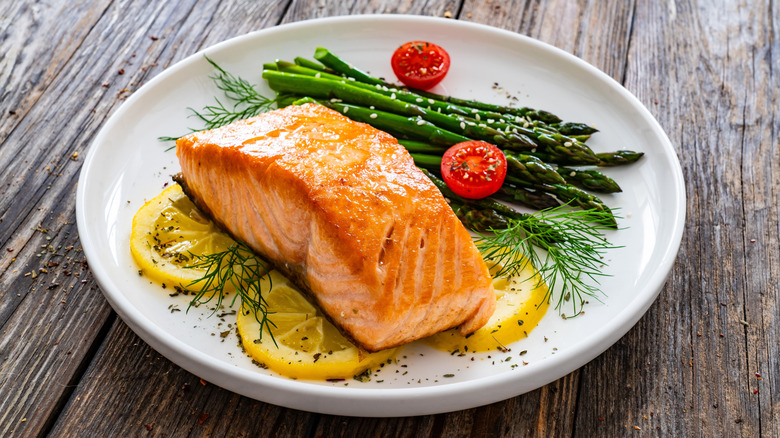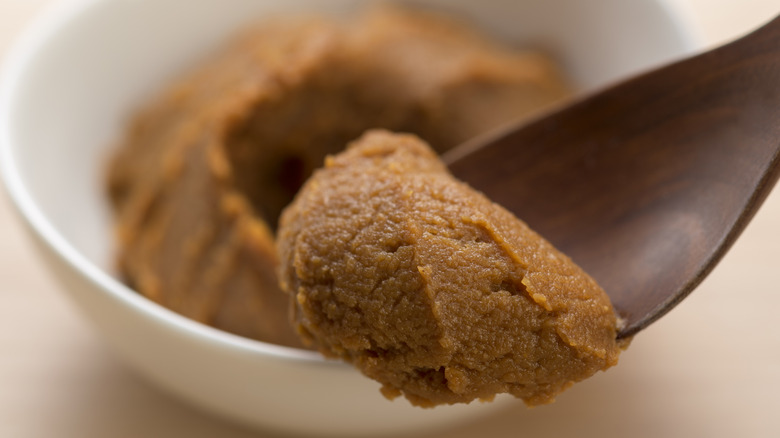Give Salmon Ultimate Flavor With One Umami-Packed Ingredient
With salmon being rich in omega-3 fatty acids and high in protein, it's a go-to dinner option for so many of us. It's a light and tender fish that can typically be cooked in 20 minutes or less, making it even more appealing for anyone with a busy schedule. So long as you manage to avoid some of the common salmon-cooking mistakes, this fatty fish is a great base for so many different types of dishes ... which is why knowing simple and tasty ways to prepare it is key to cooking fast and flavorful meals.
Sometimes that means bringing one extra ingredient to the table for salmon flavor nirvana. Miso is the ultimate umami-packed addition that is perfectly suited to seasoning salmon. Miso is a fermented soybean paste made from soybeans, salt, and a fungus called koji. It comes in a dizzying array of varieties and is a key ingredient in Japanese cooking, where it brings in a salty, savory, tangy, and uniquely funky flavor. The natural richness and flaky tenderness of salmon is the perfect vessel for carrying over the deeply savory nature of miso.
Make a basic miso sauce
Since miso paste is pretty potent, it's typically necessary to mix it with a few other ingredients in order to make a saucy but not overpowering coating for salmon. A good place to start is with a milder variety (like white or shiro miso), then finding a liquid to dilute the paste into a sauce. Soy sauce is a natural pairing for miso. With this salty, saucy base in development, layering in a sweet component like maple syrup or honey will help balance out the savory notes and create that craveable sauce. This vegan ingredient not only shines light on fish but it also gives veggies a pop of flavor.
Once you've concocted your umami-packed sauce, layer it onto your salmon to get that ultimate flavor. For optimal absorption, allow about 10-15 minutes for the mix to sink into the salmon. Whether you're baking the fish in the oven, popping it into an air fryer, or cooking it in a pan, you'll want to make sure not to over- or undercook the fish. That all depends on the cooking method and the thickness of the filet, but salmon typically takes about 12-15 minutes until it's done. You can use your eyes (or a kitchen thermometer for accuracy's sake) to judge when it's done.

